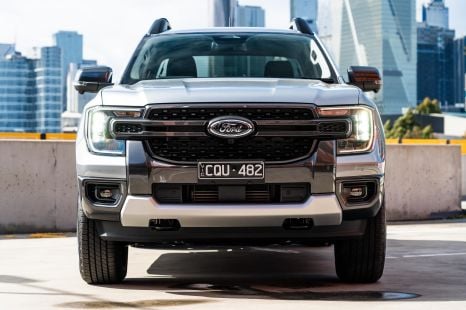

Max Davies
2 Months Ago
View 144 images
New from
$40,440 excl. on-roads
7.9
CarExpert Rating
Safety Rating
5
Warranty
10 years
Fuel Efficiency
7.5 - 8.6 L / 100km
Mitsubishi has released pricing for its Triton ute range ahead of Australian showroom arrivals in February 2024.
There will be just six variants at launch: all utes and all with a new bi-turbo diesel four-cylinder engine and an automatic transmission. Five of these are dual-cab utes, and all bar one feature four-wheel drive.
Cab-chassis models will arrive after the Triton’s launch, as will a manual transmission on some variants.
The base model for now is the GLX 4×2 dual-cab ute, which at $43,690 before on-road costs is $3250 more than the equivalent model in the outgoing Triton range.
That’s the smallest price increase in the new-generation range, with prices up by as much as $7600. We’ve included a breakdown in the price list below.
Mitsubishi has justified the price increases by saying the new Triton is more powerful, efficient, technologically advanced, safe, strong, large, ergonomic, well-equipped and comfortable than before, while also boasting increased towing capacity and off-road ability.
It also says new component and supplier sourcing naturally leads to increased costs, as do increased parts and logistics costs throughout the supply chain.
| Configuration | Price From* |
|---|---|
| 2.4L, 6-speed auto, Double Cab Utility, Diesel, 4x4 | $56,940 |
| Configuration | Price From* |
|---|---|
| 2.4L, 6-speed manual, Double Cab Utility, Diesel, 4x4 | $49,690 |
| 2.4L, 6-speed auto, Double Cab Utility, Diesel, 4x4 | $59,090 |
| Configuration | Price From* |
|---|---|
| 2.4L, 6-speed manual, Double Cab Utility, Diesel, 4x4 | $44,940 |
| 2.4L, 6-speed auto, Extended Utility, Diesel, 4x4 | $50,340 |
| 2.4L, 6-speed auto, Double Cab Utility, Diesel, 4x4 | $53,290 |
| Configuration | Price From* |
|---|---|
| 2.4L, 6-speed auto, Double Cab Utility, Diesel, RWD | $43,690 |
| 2.4L, 6-speed auto, Double Cab Utility, Diesel, 4x4 | $56,740 |
See our comprehensive details for the Mitsubishi Triton
The tub is now 1555mm long, up 35mm.
Braked towing capacity is 3500kg.
CarExpert High Resolution Photos of the Mitsubishi Triton
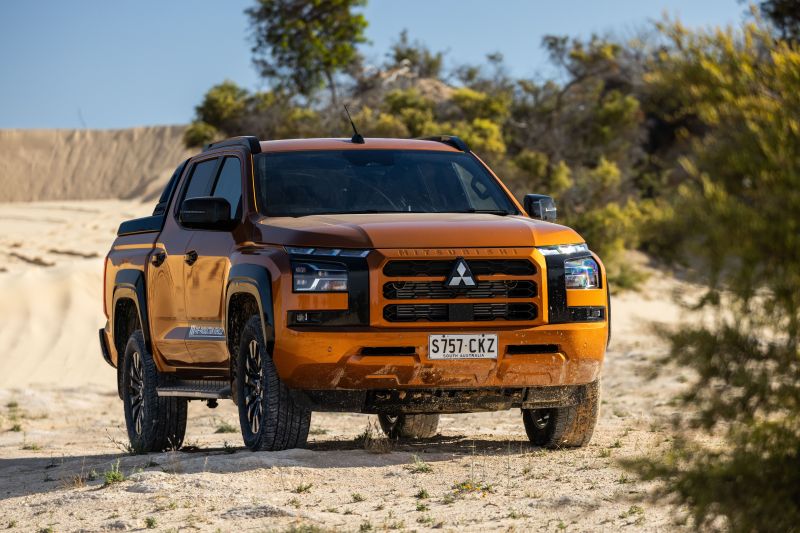

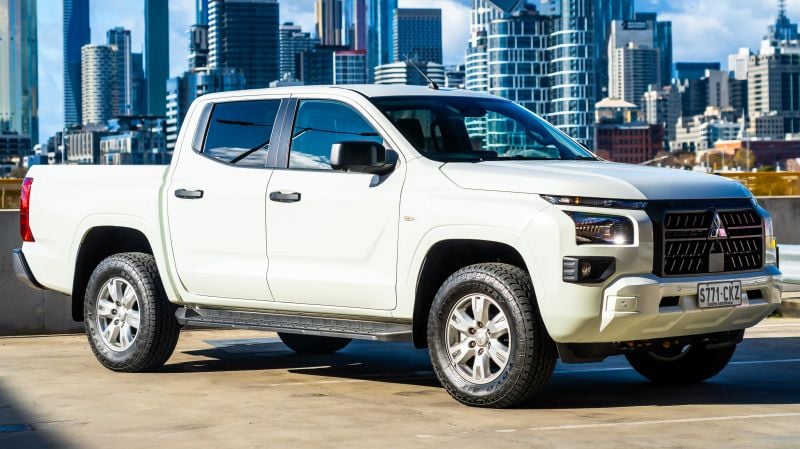
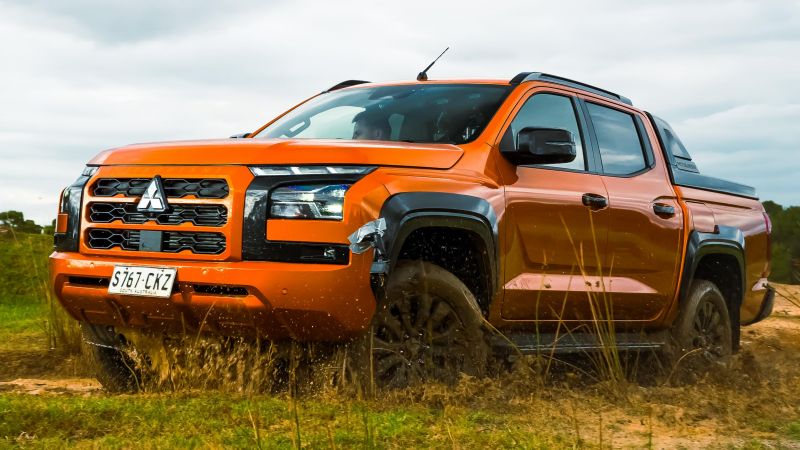


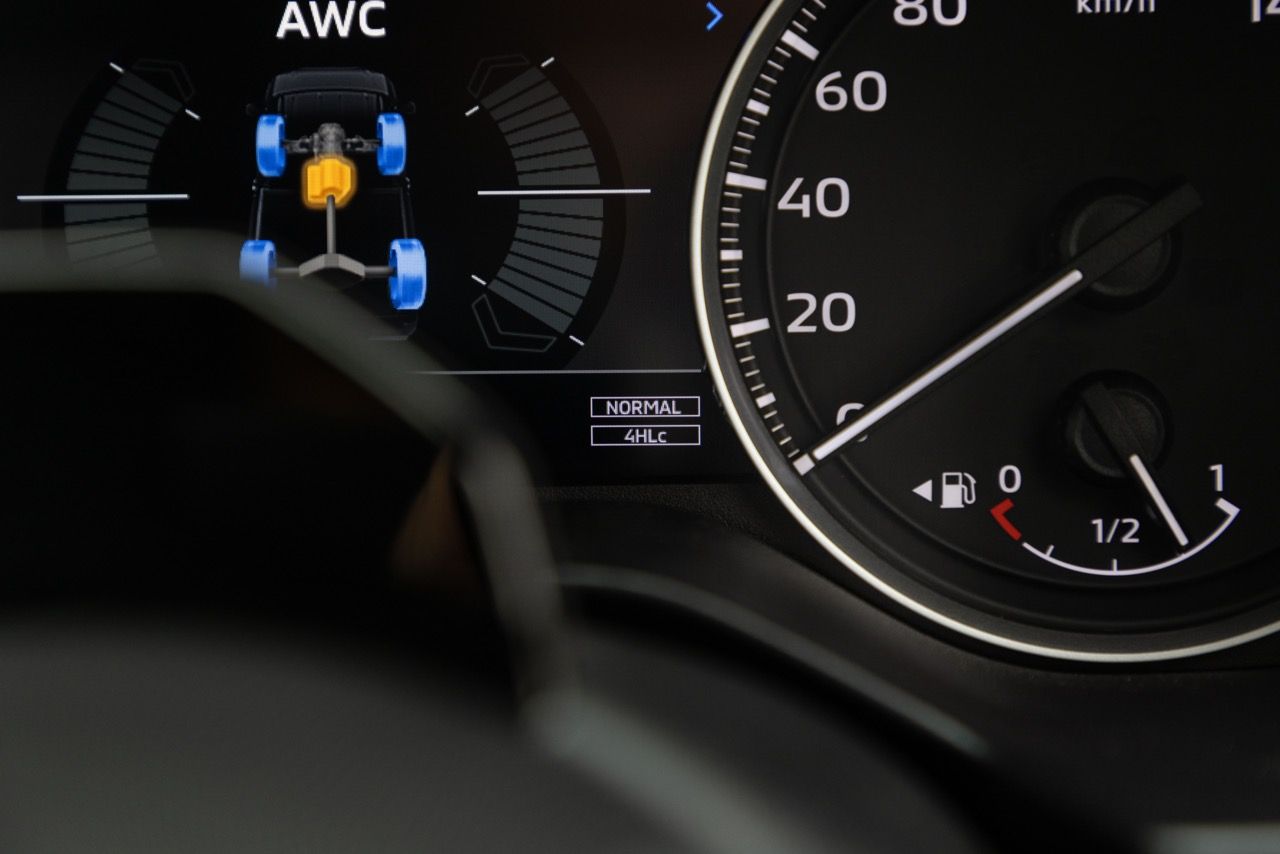
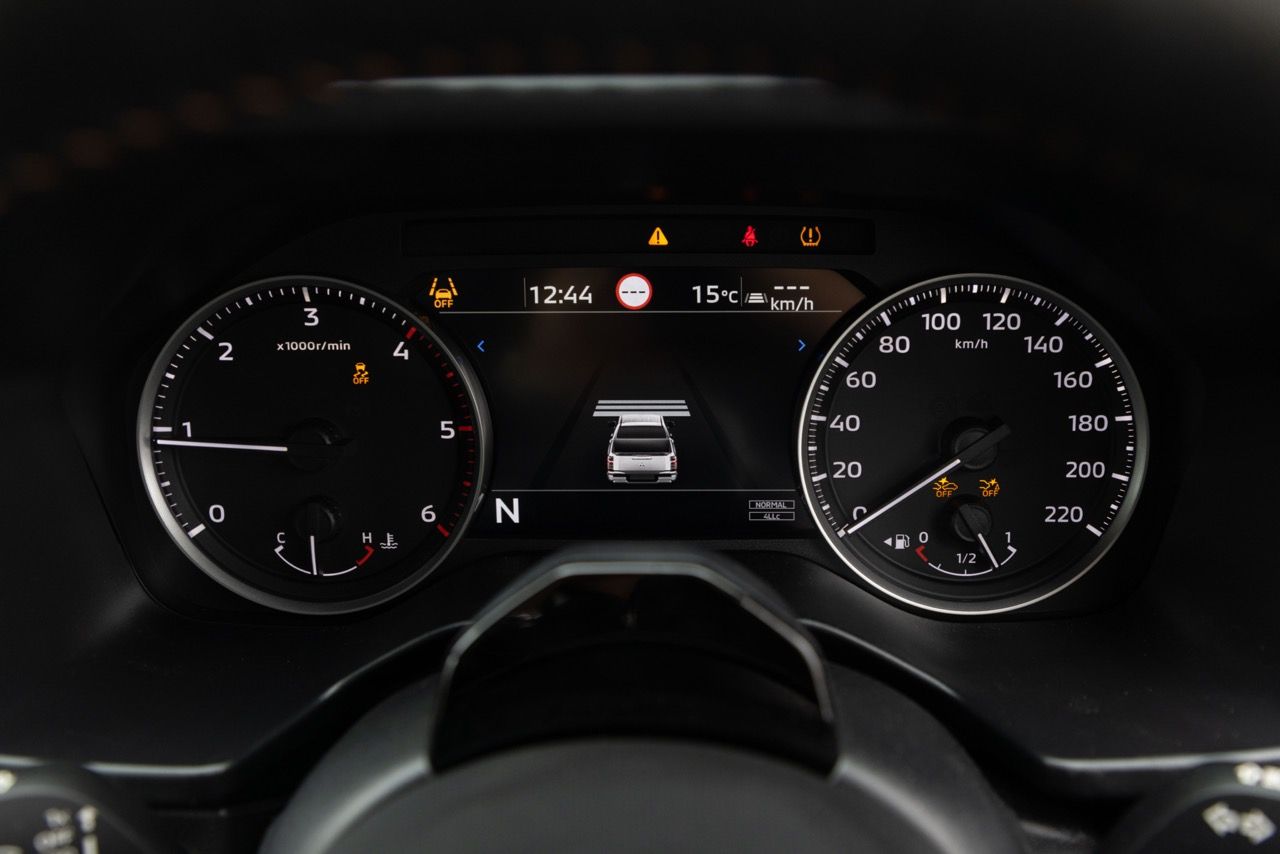
View 50 images
Mitsubishi claims a segment-first inclusion of front cross-traffic alert and driver monitoring, while this is the first generation of Triton to feature a centre airbag and reverse autonomous emergency braking (AEB).
The AEB system also gains pedestrian and cyclist detection plus a junction assist feature.
The Mitsubishi Triton has yet to be tested by ANCAP.
Standard safety equipment includes:
GLX+ and up get a surround-view camera and rear AEB.
All 2024 Mitsubishi Triton models use 7.7L/100km on the combined cycle, except for the GLX 4×2 dual-cab ute which uses 7.5L/100km.
All Triton models come with an automatic stop/start system.
| Mitsubishi Triton | Fuel Type | Combined |
|---|---|---|
| 2.4L, 6-speed auto, Double Cab Utility, Diesel, 4x4 | Diesel | 8.6 L/100km |
What are the running and servicing costs of a Mitsubishi Triton?
Service pricing is as follows:
Mitsubishi’s standard warranty covers five years or 100,000km, but so long as you return to one of its dealerships at each service this extends to 10 years or 200,000km.
Servicing at dealerships also lets you take advantage of Mitsubishi’s 10 years of capped-price servicing. Maintenance in the Triton is required every 12 months or 15,000km – whichever comes first.
10 years of servicing will set you back $6090 using the capped-price service plan.
Our expert take on Mitsubishi Triton drivability.
The new 2.4-litre four-cylinder diesel engine is offered in just one tune across the range, and features two turbochargers: one small one for fast response at low revs, and a larger one for greater top-end performance.
All 2024 Mitsubishi Triton models use a 2.4-litre bi-turbo four-cylinder diesel engine with 150kW of power at 3500rpm and 470Nm of torque from 1500 to 2750rpm.
It’s mated with an updated six-speed automatic transmission. A six-speed manual will be offered on some variants after the Triton’s launch.
GLX and GLX+ models offer an Easy Select 4WD system with selectable low- and high-range gearing; the GLX+ also features a locking rear differential.
GLS and GSR models get the Super Select 4WD II system, which also features a full-time four-wheel drive mode for use on tarmac. They also receive terrain control and hill descent control.
Peak torque of 470Nm kicks in from 1500rpm – it’s not as doughy as the outgoing generation, and it feels quite eager to get up and move. The other thing you’ll notice almost immediately is the improved ride.
Local ride and handling work resulted in larger diameter dampers and more effort put into ride compliance both with and without a load. Australia has now been deemed a core market for the Japanese brand, which means the door is open far earlier in terms of product development and input.
It also means they get greater involvement in terms of ride and handling customisation for our market. This dates back to when Mitsubishi used to manufacture cars in Australia and even had its own proving ground (which has now fittingly been turned into a race track).
Gone is the old hydraulic steering system that lacked feel and purpose. The new electrically assisted rack offers a greater deal of communication and feedback through the wheel – there’s enough weight in the rack to make it feel like things are happening, but it’s not prohibitively heavier.
What colours are available for the Mitsubishi Triton
The 2024 Mitsubishi Triton is available in the following colours:
All models feature a black interior, though the GLX+ and GLS feature silver stitching and the GSR orange stitching.
The 2024 Mitsubishi Triton is backed by a 10-year, 200,000km warranty if you service the ute through Mitsubishi dealers. There are 10 years of capped-price servicing, with service pricing to be announced closer to launch.
The Triton competes with the Ford Ranger and Toyota HiLux, but it's not necessarily as polished as those utes. Instead, the Triton offers almost the same level of luxury and performance for significantly less money.
At the bottom end of the range, the pared-back Triton goes head-to-head with 1.9-litre versions of the Mazda BT-50 and Isuzu D-Max.
At the top end, not only does the Triton take on the Ranger XLT and HiLux SR, it battles fully-loaded versions of the Great Wall Cannon.
Is this the right car for you? Out experts buy or not guide.
The cheapest Mitsubishi Triton is the GSR SPECIAL EDITION (4x4) that starts from $0.
The most expensive Mitsubishi Triton is the GSR (4x4) that starts from $67,200.
The best towing capacity of a Mitsubishi Triton is 3500 kg offered by the following variants: GSR SPECIAL EDITION (4x4), GLX (4x2), GLX (4x4), GLX+ (4x4), GLX-R, GLS (4x4) 1T PAYLOAD, GLS (4x4), GSR (4x4) 1T PAYLOAD and GSR (4x4).
The largest Mitsubishi Triton is the GSR SPECIAL EDITION (4x4) which measures 1930mm wide, 5320mm in length and sits 1795mm tall.
The most powerful Mitsubishi Triton is the GSR SPECIAL EDITION (4x4) which has 150kW of power from its 2.4L TURBO DIESEL DIR INJ engine.
The Mitsubishi Triton is built in Thailand and shipped to Australia.
The heaviest Mitsubishi Triton is the GSR SPECIAL EDITION (4x4) which weighs 3200 kg (kerb weight).
The Mitsubishi Triton uses Diesel.